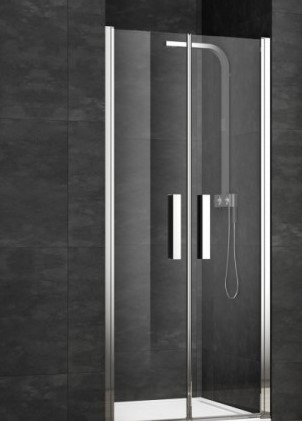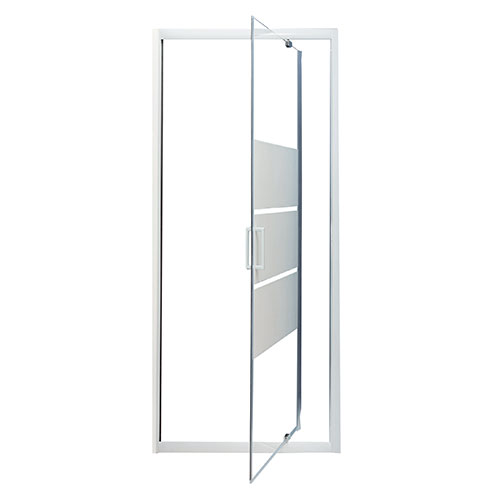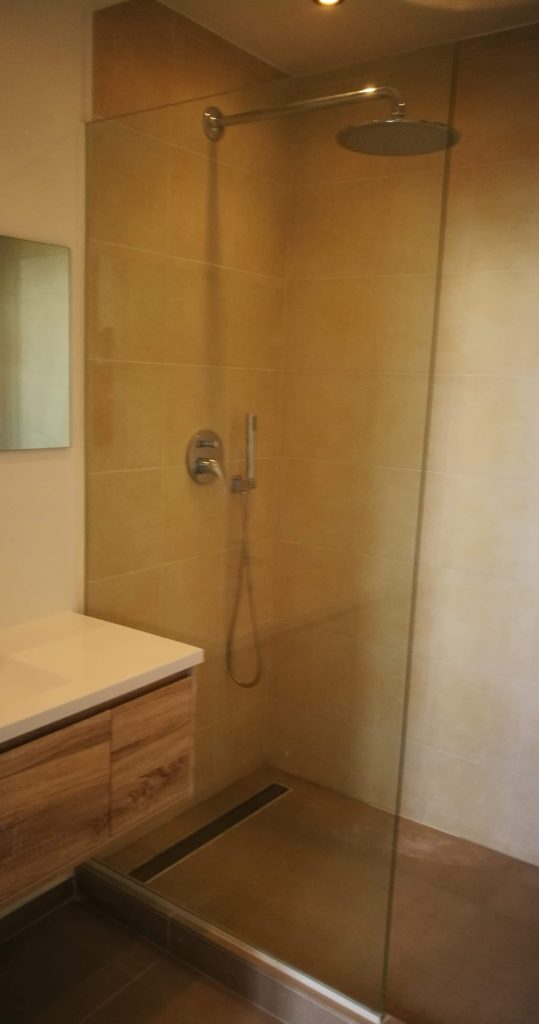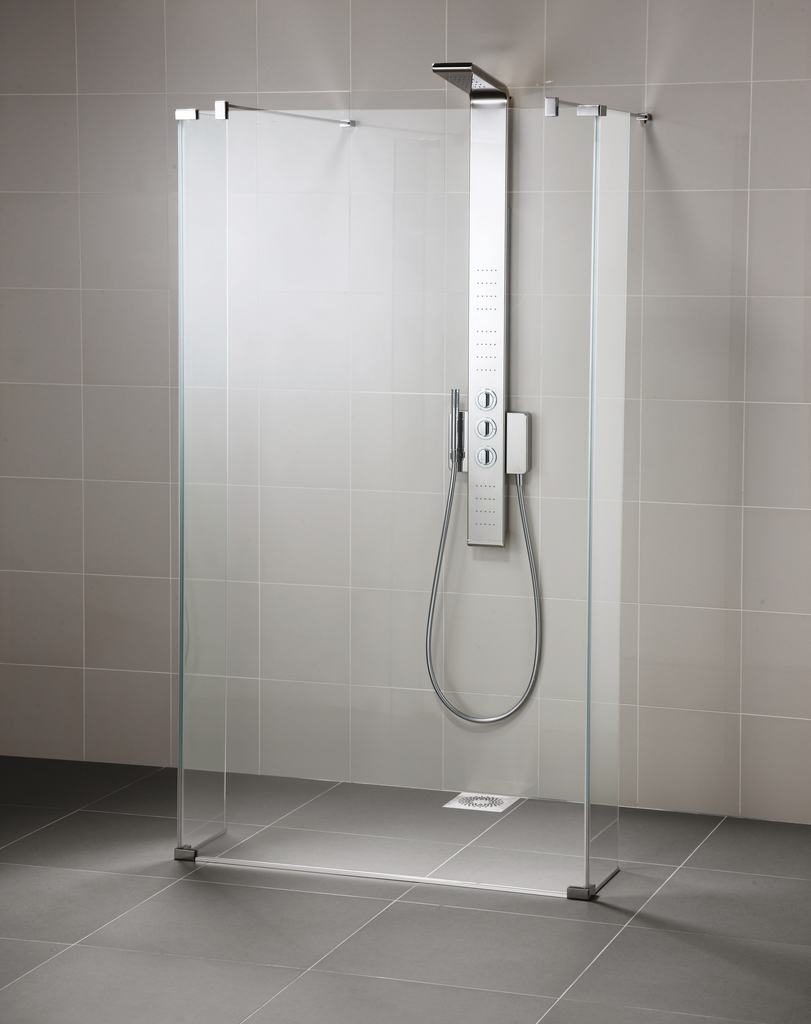The door or shower wall adds a finishing touch, while to reduce splashing in the bathroom. They are found in different forms to better adapt to the configuration of space.
Above all, you will need mesure. take into account to the shower base and the space dedicated to the shower. Then choose the type of door that best suits your space and tastes.
The differents types of doors

Casement: single or double, large of passage, preferably for large bathrooms, take into account the space required for an opening to the outside.

Sliding: ideal for rectangular and square showers, does not overflow on the outside, sometimes limited access.

Swivel: opens both outward and inward, small footprint, clear passage, suitable for small bathrooms, overflow to the outside less important than that of a swing door.

Folding: the panels are folded inside the shower, access width greater than that of the sliding, suitable for small bathrooms.

Fixed shower wall: mainly used for rectangular or Italian showers, easy access, sleek and chic style.
The shower walls are available in standard sizes ranging from 78 to 140 cm wide. You will also find complete shower angles ready to assemble. Beyond it will be necessary to opt for tailor-made while respecting a minimum width of 50 cm and a maximum of 4 m (if sliding door).
The shower configuration
- Rectangular corner: A single fixed shower wall on the length is generally recommended. You can decorate it with a small door to reduce access.
- Square angle: small shower, prefer the installation of a fixed shower wall plus a door.
- In niche: partition on 3 sides, access closed by a door, take into account the opening side.
- Open with a single wall: choose a fixed shower wall parallel to the wall without hinged door, accessible from both sides. You can still choose an angled wall or a shower entirely delimited by walls and a door.

In terms of finish, the profiles are made of aluminum or PVC, walls and doors made of safety glass or acrylic. They can be transparent, screen-printed or frosted. Note that acrylic is more economical but less resistant in time.

Commentaires récents